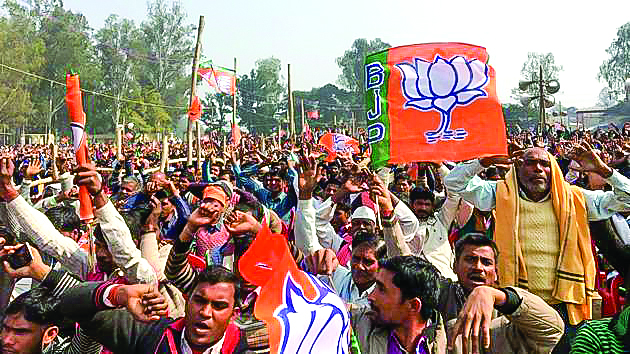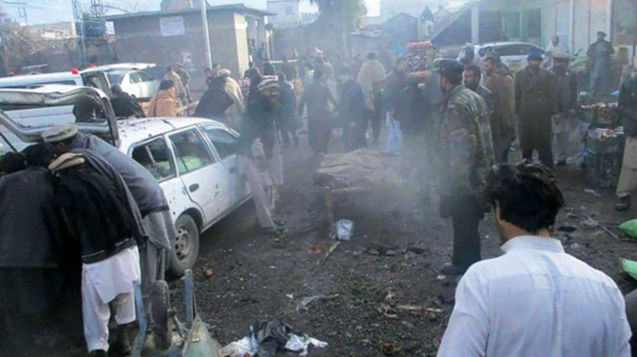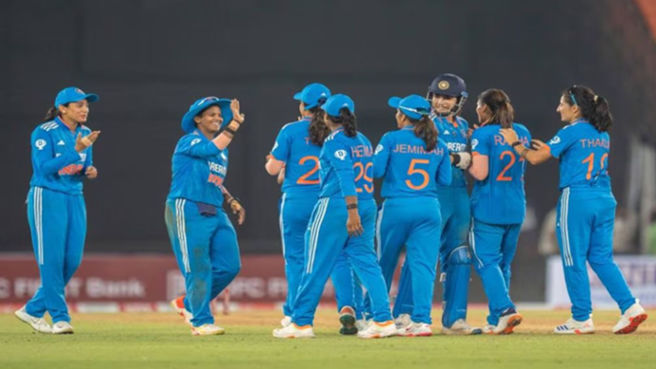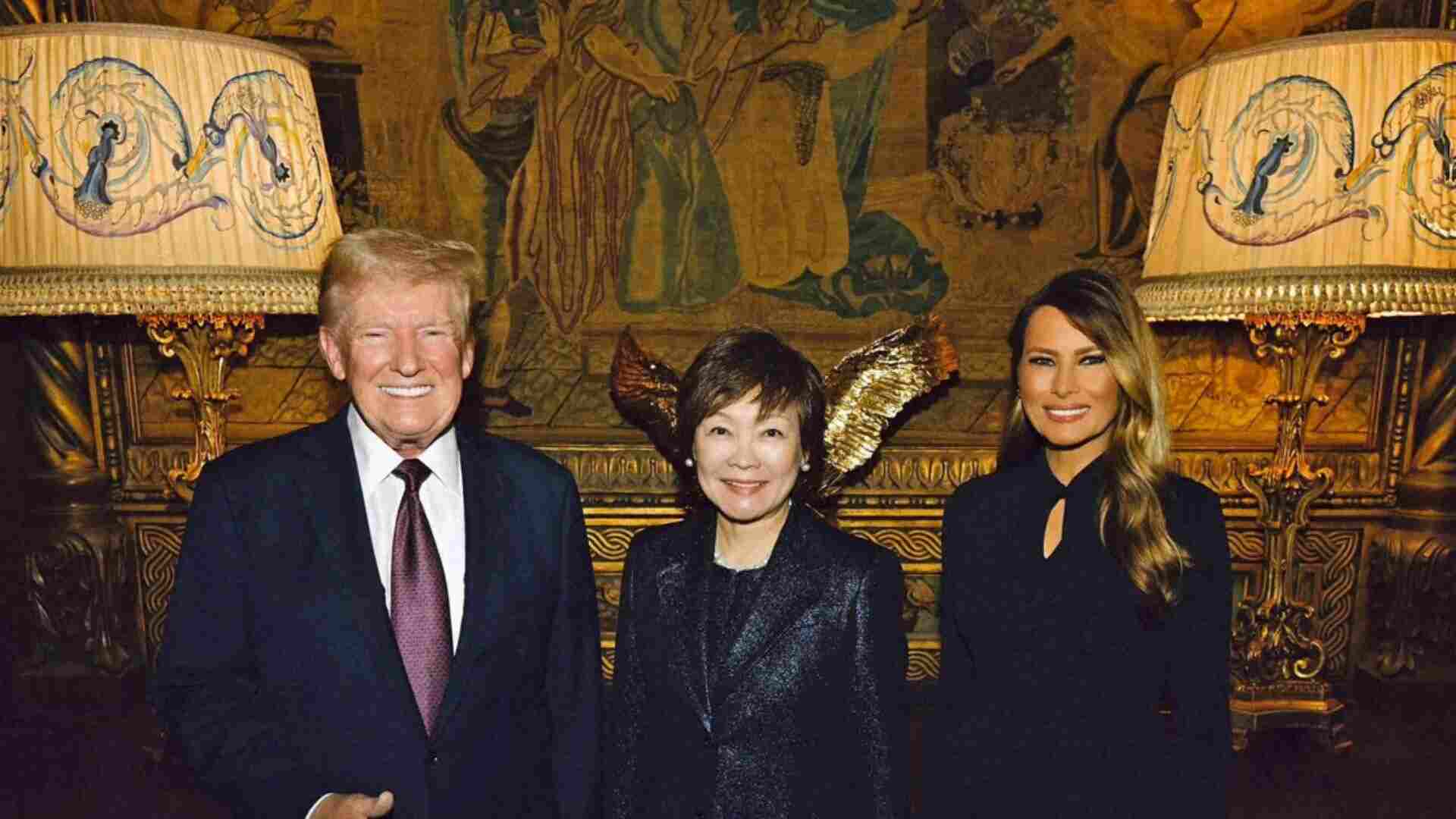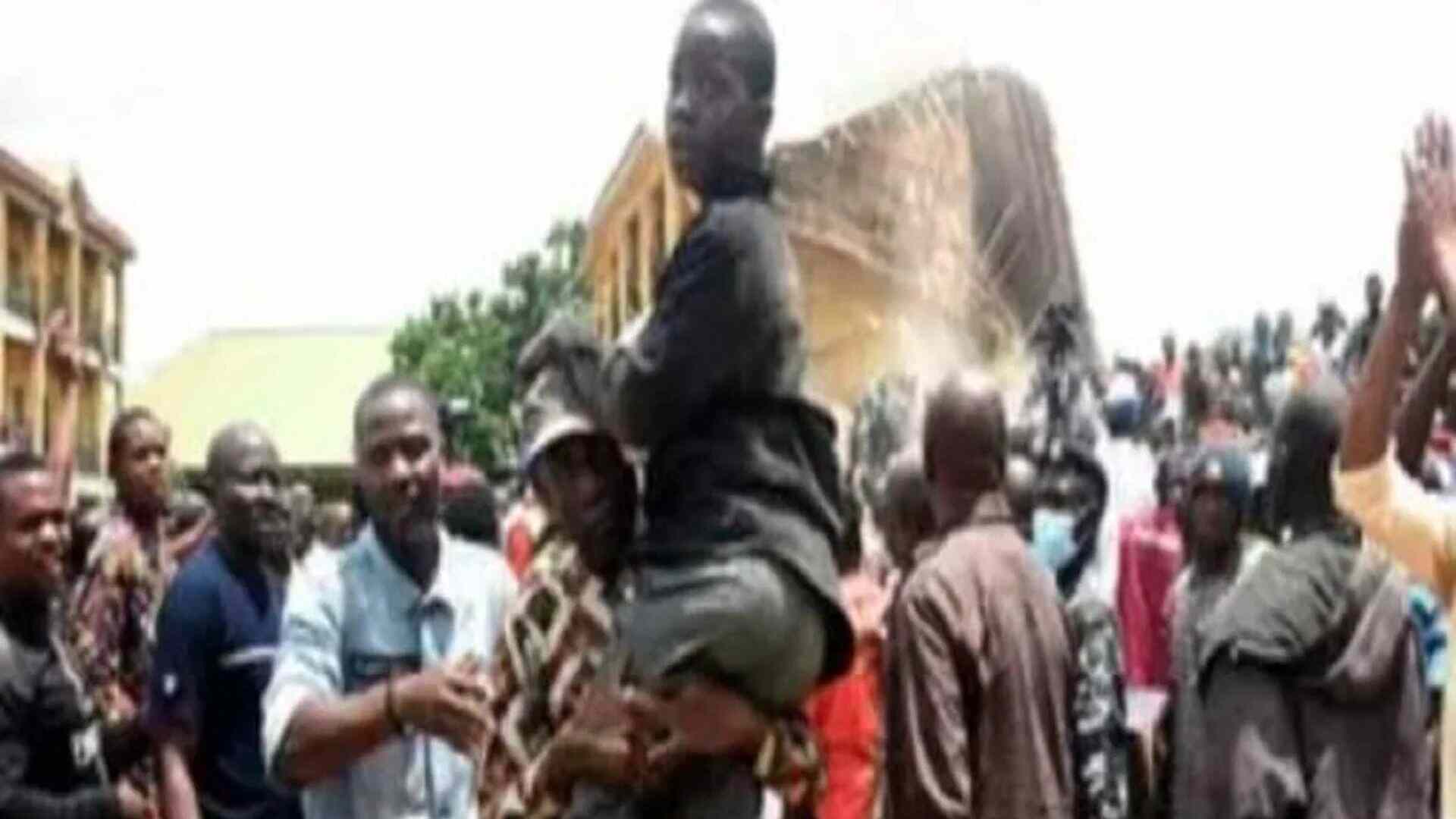Pilibhit is the only Parliament seat in the history of India where descendants family emerged victorious under thesaffron flag making it a citadel of the BJP.
Pilibhit Lok Sabha constituency is one of the 80 Lok Sabha (parliamentary) constituencies in Uttar Pradesh state in northern India. The combination of strong BJP leadership in Pilibhit constituency, effective organizational strategies, local development focus, and ideological resonance with the electorate makes it difficult for the Congress to gain a foothold in Pilibhit.To improve its prospects, the Congress would need to strengthen its local leadership, build a more robust organizational presence, and effectively address the specific needs and aspirations of Pilibhit’s voters. Lets have a historical look on this constituency
Historical and Geographical Context: Pilibhit Lok Sabha constituency, located in the northern Indian state of Uttar Pradesh, holds significant political and cultural importance. Established in 1952, it has been a key player in the political landscape of the region. Geographically, Pilibhit is bordered by the Himalayan foothills to the north and is known for its rich biodiversity, including the Pilibhit Tiger Reserve. The constituency covers parts of Pilibhit district, which is characterized by its fertile plains and extensive agricultural activities.
Demographics and Socio-Economic Profile: Pilibhit constituency has a diverse demographic profile with a mix of urban and rural populations. The primary language spoken is Hindi, with a significant portion of the population also fluent in Urdu and Punjabi. The socio-economic profile of the region is primarily agrarian, with sugarcane, wheat, and rice being the main crops. The constituency also boasts a significant number of small and medium enterprises, particularly in the sugar and rice milling industries.
Political Landscape: Pilibhit has been a battleground for several prominent political figures. Historically, it has been a stronghold of the Bharatiya Janata Party (BJP), with Varun Gandhi, a notable member of the Gandhi family, representing the constituency in multiple terms. The political dynamics in Pilibhit are influenced by caste equations, agrarian issues, and the personal charisma of political leaders. The electorate in Pilibhit has shown a preference for leaders who can address local issues such as water scarcity, agricultural support, and infrastructure development.
Election Dynamics: Elections in Pilibhit are characterized by high voter turnout and competitive campaigns. The constituency has witnessed a blend of traditional door-to-door campaigning and modern social media outreach. Issues like development, education, healthcare, and employment dominate the election discourse. The youth, constituting a significant portion of the electorate, play a crucial role in shaping the election outcomes, often swayed by development promises and employment opportunities.
The Indian National Congress faces several challenges in winning the Pilibhit Lok Sabha constituency, which has historically been a stronghold of the Bharatiya Janata Party (BJP). Here are the key reasons:
Strong BJP Presence: Pilibhit has consistently leaned towards the BJP, making it a challenging territory for the Congress. The BJP has built a strong voter base over the years. Figures like Varun Gandhi, a prominent BJP politician and member of the Nehru-Gandhi family, have significantly influenced the constituency. His personal appeal and work in the area have bolstered the BJP’s position.
Political Dynamics: The BJP has effectively mobilized dominant caste groups and other communities in Pilibhit. The party’s strategies and alliances with local leaders have strengthened its voter base. The BJP’s promotion of Hindutva resonates well in Pilibhit, which has a significant Hindu population. This ideological alignment attracts voters who might be less inclined to support the Congress.
Organizational Strength: The BJP’s organizational structure in Pilibhit is robust, ensuring effective mobilization during elections. The party’s grassroots presence and active local units give it an edge over the Congress. The BJP’s efficient and well-funded election campaigns often outmatch those of the Congress. Their strategic use of social media and local outreach plays a crucial role in voter engagement. BJP representatives in Pilibhit have focused on local development issues, such as improving infrastructure, water management, and agricultural support. This focus resonates with the electorate, enhancing the party’s appeal.
Congress’s Weaknesses: The Congress has struggled to field strong, charismatic leaders in Pilibhit who can rival the BJP’s candidates. This leadership gap affects the party’s ability to connect with voters. Compared to the BJP, the Congress’s local organizational structure is weaker. This limits its ability to effectively mobilize voters and run comprehensive election campaigns.
Socio-political Context: The evolving demographics in Pilibhit, with a younger and more aspirational electorate, may align more with the BJP’s development and economic narratives than the Congress’s traditional rhetoric.
List of MPs
In the first parliamentary election, the Praja Socialist Party (PSP) won this seat thrice. Later, in the following elections, Indian National Congress (INC) and its participatory parties have won this seat four times. From 1989 onwards, Menaka Gandhi (a member of Nehru-Gandhi family) has kept this seat under her influence. She has won this seat by contesting on the tickets of different parties or independently. The Bharatiya Janata Party (BJP) won Pilibhit parliamentary constituency in 1991 parliamentary elections defeating Janata Dal’s Maneka Gandhi, in the Ayodhya wave aftermath; by 2004, Menaka Gandhi had joined BJP and she won this seat that year on BJP’s ticket. She contested successfully from Aonla in 2009 but returned to Pilibhit in 2014. Pilibhit parliamentary constituency is one of a few constituencies in India, which have sent a woman to the Indian Parliament for more than five time
Mukund Lal Agrawal: He was Member of Parliament in the first Lok Sabha from Pilibhit Constituency elected in 1952 as an Indian National Congress representative. His father was Kanhai Lal, a prominent sahukar and social worker in the city of Pilibhit. Agrawal attended High School and Intermediate at Government High School, Pilibhit, which is currently known as Drumand Boys’ Government Intermediate College. He was a member of the Indian National Congress. In the 1952 general election, Agrawal was elected as the first Member of Parliament from Pilibhit constituency, gaining 43.11% of the vote as an INC candidate and defeating his rival contender from the Socialist Party, who gained 22.58% of the votes.
Kunwar Mohan Swarup: He was Member of Parliament in the second (1957), third (1962), and fourth (1967) Lok Sabha on Praja Socialist Party’s ticket and again in fifth Lok Sabha (1971–77) as a member of Congress Party from Pilibhit Constituency. In 1977, he contested the seat again on Indian National Congress’s ticket but lost to Janata Party in the anti-Indira wave. Swarup was son of Kunwar Shambhu Sahai, a prominent freedom fighter and social worker from Sahora village. Swarup was educated at Bareilly College, in Bareilly and married Shanti Devi in May 1940 at the age of 22. The couple had four sons and two daughters. Swarup was associated with the Praja Socialist Party (PSP) until 1970. He held various posts and committee memberships.
Md Shamsul Hasan Khan: He was an Indian politician who was a Member of Parliament in the sixth Lok Sabha, elected from the Pilibhit constituency in 1977 as a candidate of the Bharatiya Lok Dal. Khan was son of Mohd. Badrul Hasan Khan, who was the nawab of Sherpur Reasat in the former princely state of Rampur. Khan was educated initially at the village school in Sherpur Kalan, of which he later became president. Khan joined the Indian National Congress as member of All-India Congress Committee (O) and was president of the District Congress Committee (O) for six years. Khan was a prominent agriculturist from Pilibhit, and was also a member of Farmers’ forum of India. Khan was elected as a Member of Parliament for the Sixth Lok Sabha from Pilibhit constituency with 71.32 per cent of the vote as a Bharatiya Lok Dal candidate, defeating a rival representing the Indian National Congress.
Harish Kumar Gangwar: He was a Member of Parliament in the seventh Lok Sabha from Pilibhit constituency elected in 1980 on Indian National Congress ticket. HGangawar attended primary school in Teolia Village, and attended High School and Intermediate class in Bareilly city, after which he joined Bareilly College, Bareilly for Bachelor of Arts. After passing the same he joined Masters of Arts from Bareilly College, Bareilly. after that he successfully completed B.T. course from Bareilly College, Bareilly. Then he joined L.L.B. from Bareilly College, Bareilly and after completing the same, he started practising Law as a profession in the city of Bareilly. At initial, he joined Bhartiya Jan Sangh and elected for President of Gram Sabha, Teolia village several times during 1950–60. But with due course of time, he joined Congress (I), and elected for Uttar Pradesh Legislative Assembly in 1962 form Bareilly legislative seat and again in 1974 from the same Bareilly legislative seat. He was elected as seventh Member of Parliament from Pilibhit constituency with 40.42% votes on Congress (I)’s ticket and defeated his rival contender who was from Janata Party and received 25.34% votes in the general election held in 1980.Apart from this, he was ex-director of Sugar Cane Co-operative Society, Bareilly and Manager of Patel Inter College in Dhaura town in Bareilly district. He also held the position of Member in the Committee on Subordinate Legislation.
Bhanu Pratap Singh: He was Member of Parliament in the eighth Lok Sabha from Pilibhit Constituency elected in 1984 on Congress (I)’s ticket. He is an agriculturist by profession and a Member of district Congress Committee, Bareilly since 1964. He was elected as General Secretary, district Congress Committee for 1967–72. He has also served as Deputy Minister for Agriculture, Dairy and Animal Husbandry, Government of Uttar Pradesh in 1972 and Minister of State for Agriculture, Animal Husbandry and Sugarcane in 1980 and Cabinet Minister for Sugarcane, Excise and Revenue and Agriculture, Dairy, Gardening and Excise Department in 1980. He was the Member of Uttar Pradesh Legislative Assembly for 1969-74 and 1980–84. He was elected as eighth Member of Parliament from Pilibhit Constituency with 63.84% votes on Congress (I)’s ticket and defeated his rival contender who was from Bharatiya Lok Dal and received 23.39% votes in the general election held in 1984.
Maneka Gandhi: She is an Indian politician, animal rights activist, and environmentalist. She is a member of the Lok Sabha, the lower house of the Indian parliament and a member of the Bharatiya Janata Party (BJP). She is the widow of Indian politician Sanjay Gandhi. She has been a minister in four governments, most recently in Narendra Modi’s government from May 2014 to May 2019. She also authored a number of books in the areas of etymology, law and animal rights. Maneka’s relationship with Indira Gandhi gradually disintegrated after Sanjay’s death and they would continually argue with one another. As she had a fallout with Indira Gandhi, on 3 April 1983, she founded the Rashtriya Sanjay Manch along with Akbar Ahmad. The party primarily focused on youth empowerment and employment. It won four out of five seats in the Elections in Andhra Pradesh. Gandhi contested the Amethi constituency from Uttar Pradesh for the 1984 general election for the Lok Sabha, but lost to Rajiv Gandhi. In 1988, she joined V. P. Singh’s Janata Dal Party and became the General Secretary. In the 1989 Indian general election, Gandhi won her first election to Parliament and became a Minister of State as the Minister for Environment. As a matter of fact, she contested from Pilibhit constituency and emerged victorious at a record number of six where she fought from Janata Dal and won the seat in independently in 1989 and 1996. She fought independently in 1998 and 1999 while in 2004 and 2014, she contested from BJP and won the seat.
Varun Gandhi: He is an Indian politician and a third-term Member of Parliament for Lok Sabha from the Pilibhit constituency. He is a member of the Bharatiya Janata Party and was inducted into Rajnath Singh’s team in March 2012 as General Secretary. He belongs to the Nehru–Gandhi family, which has occupied a prominent place in the politics of India since a time before the country’s independence in 1947. Gandhi was first introduced to the Pilibhit constituency by his mother during the 1999 election campaigning. Maneka had been a part of the National Democratic Alliance (NDA) since earlier but she and Varun formally joined BJP in 2004. Varun Gandhi campaigned for the party in the 2004 elections, covering over 40 constituencies. In the 2009 general election, the BJP decided to field Varun Gandhi as its candidate from the Pilibhit constituency instead of his mother Maneka Gandhi. He won the seat by receiving 419,539 votes and defeated his nearest contending candidate, V.M. Singh, by a margin of 281,501 votes.
The victory was the strongest of any of the four Gandhi family candidates in the election: his mother Maneka Gandhi, aunt Sonia Gandhi and first cousin Rahul Gandhi. The security deposits of all other candidates, including those of V.M. Singh of the Indian National Congress and the Bahujan Samaj Party candidate Ganga Charan Rajput were forfeited.

